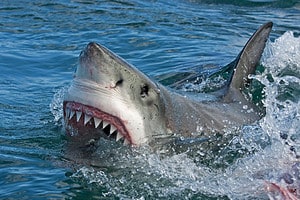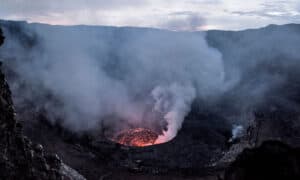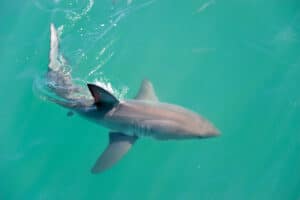Ahh…the mystery of the great beasts. Their complexities, power, and beauty. Sharks are masters of their domain, feared by those in and out of the water, and one of nature’s great stabilizers. So do they constantly speed through the oceans? How do their gills and speed work in tandem? And more fundamentally, how do shark gills work?
How Do Sharks Breathe?
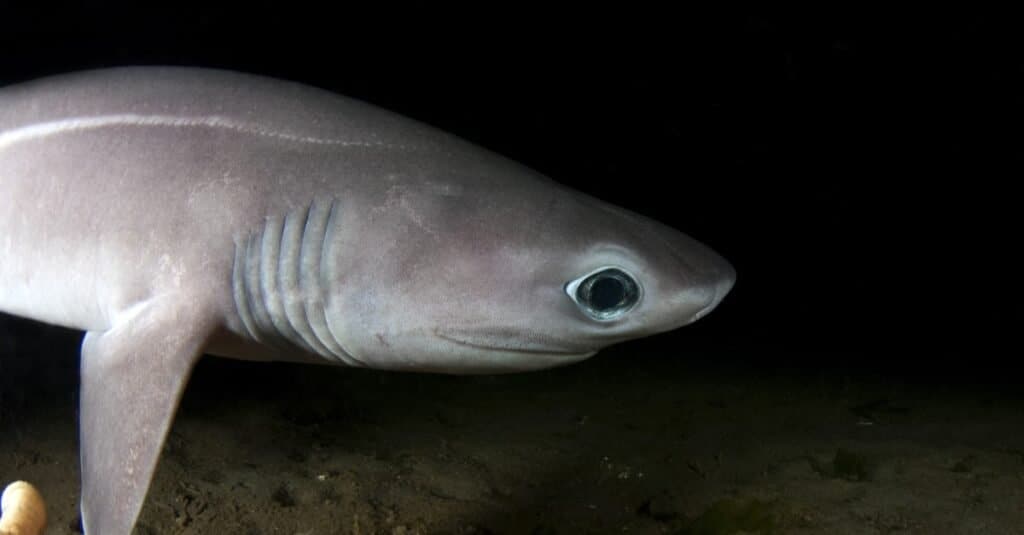
A close up of shark gills
©Greg Amptman/Shutterstock.com
Sharks have noses so they can breathe, right? They do have noses, but they use them to smell, not to breathe. They don’t have lungs either so without breathing through their noses and having no lungs, how in the world do they breathe?
Enter the gills. They’re familiar fish body parts, located between the head and pectoral fins, but let’s go deeper into how they work and what other parts of shark’s bodies help them breathe. And unless you’re a shark-freak, it might surprise you…
The Gill System: How Sharks Breathe
In a nutshell, humans breathe in oxygen and other gases, filter out the waste such as carbon dioxide, and then exhale. It’s called a gas exchange. Other parts of our bodies play vital roles in this process, but we’re here to talk about sharks.
With sharks, it’s the same way with different parts. What they use most as their respiratory system is their gills. So water goes in and out through the gills and that’s how they breathe, right? But there’s more to it than that.
The gill system starts when water is taken in through the mouth and spiracles (if they have them). Tiny blood vessels/capillaries retain the water’s oxygen while the carbon dioxide waste is released through the gills.
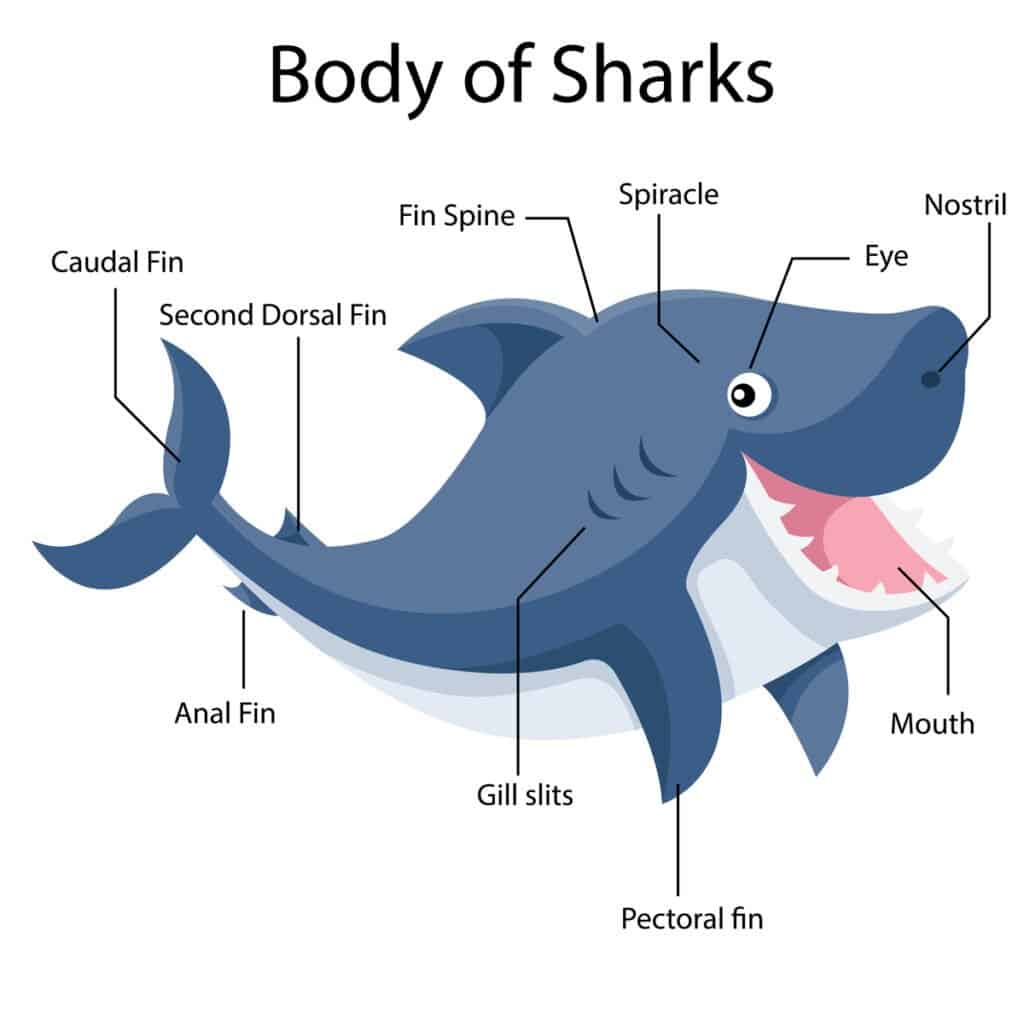
As you can see in this
delightfulshark illustration, a shark’s spiracle is usually located behind their eyes
©nalin chanthorn/Shutterstock.com
What’s a spiracle?
“Many sharks, especially bottom-dwelling species, have paired openings called spiracles located between the eye and the gill slits. Spiracles are used to take in water and ventilate the gills, even while the shark may be feeding or at rest on the bottom.” — dlnr.hawaii.gov
They’re usually right behind the eyes to be exact. They lead into the mouth for respiration.
As sharks lie on the bottom of the ocean floor or even bury themselves in the sand, their gills open and close due to the actions of the spiracles. You could compare it to the way we can suck from a straw to get liquid into our bodies.
Fish like the whale shark have lost this ability since the process of evolution has either shrunk the spiracles or made them disappear altogether. Others, like the sand tiger shark, can switch between buccal breathing and ram ventilation depending on their needs. Overachievers.
How many gills does a shark have?
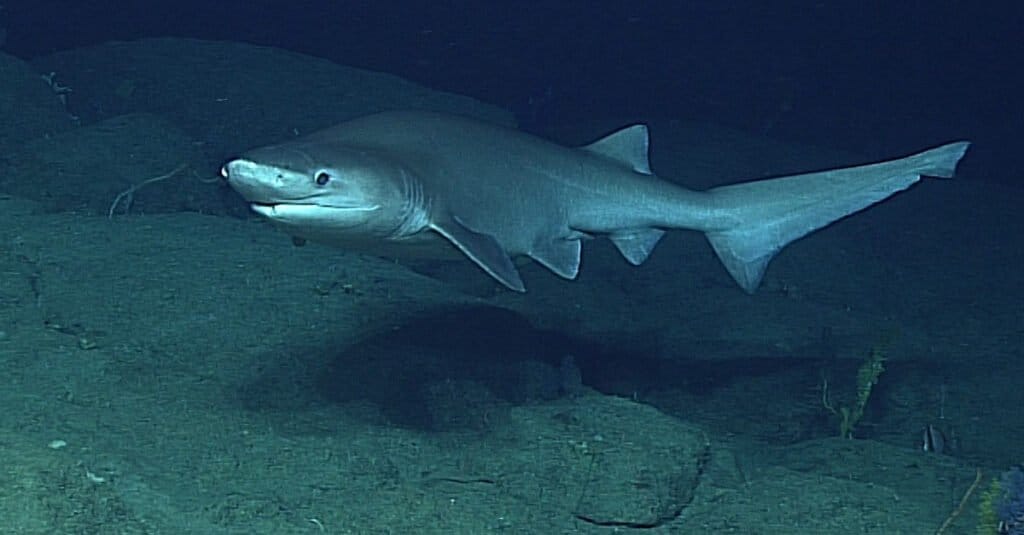
A sixgill shark swimming off Vancouver Island, Canada.
©NOAA Ocean Explorer from USA / CC BY-SA 2.0, via Wikimedia Commons – License
Most sharks have five gills, however, some have six or seven. A group called “cow sharks” are considered to be the most primitive sharks that exist and have more than five gills. There are four species that include sixgill sharks and sevengill sharks (someone was original).
They’re so unique, they’re even included in the Guinness World Records book! Most of them live in deep water habitats at the bottom of the ocean.
H-2-Ohhhh!
The air we breathe is 21% oxygen. The oxygen concentration in water is only 1%. That’s not a typo. Sharks take in 80% of the available 1% while humans take in only 25% of the 21% that’s available to us.
Oxygen enters the ocean from the atmosphere and from photosynthesis so surface water, which ends at about 300 feet, holds more oxygen than the lower depths.
Active shark species like the mako and great white sharks tend to hang out closer to the surface due to their need for speed. They need more oxygen than other species in order to catch quick prey and so they go where they can get it. Makes sense.
Do sharks drown if they stop swimming?
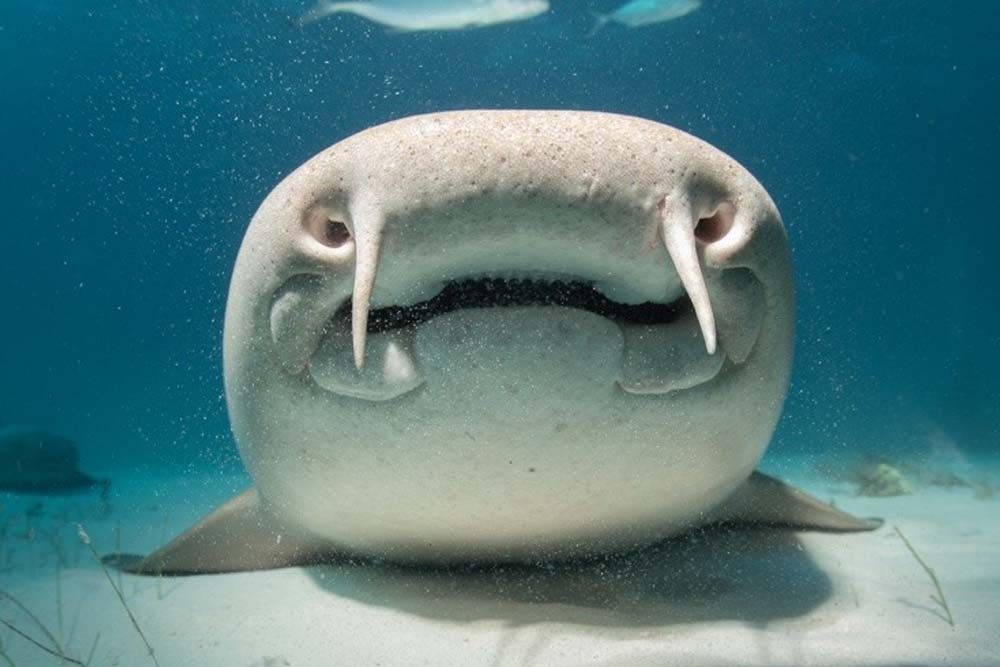
A close up of a nurse shark’s mouth
©Maui Topical Images/Shutterstock.com
Some sharks, like the shortfin mako, great white, and whale sharks will certainly die if they remain motionless since they have no back-up system to their gill-oriented way of breathing.
These sharks use something called obligate ram ventilation. They swim quickly with their mouths open forcing the water to circulate through their gills so they can breathe.
Then there are the exceptions…
- Nurse sharks
- Woggegong sharks
- Catsharks
- Bullhead sharks (like the horn shark)
- Sand tiger (also known as the gray nurse shark)
…are all sharks that can stay in place and still breathe. Take a look!
In fact, these sharks have an entire systemic process for them to be able to remain motionless. Since they’re less active fish than the mako or the great white, they need to be able to catch prey at slow speeds/
They tend to be ambush predators which is exactly what it sounds like. They’ll lie in wait and either by using their own camouflaged motionless bodies and/or the ocean’s habitat to hide, will pounce on unsuspecting prey when the opportunity arises.
They remain completely still due to their ability to buccal (pronounced like “buckle”) pump. A way of breathing where they pull water into the mouth through the spiracle which clears the carbon dioxide that leaves through the gills. It’s named after the buccal, mouth, muscles. Skates and rays use buccal breathing, too.
So in summary, how do sharks breathe?
- Grills
- Spiracles
- Their mouth
- Capillaries
- Ram ventilation
- Blood vessels
- And cuccal pumping
Are all part of a complex, cohesive, respiratory system that makes sharks the compelling, unique fish they are.
The photo featured at the top of this post is © Alessandro De Maddalena/Shutterstock.com
Thank you for reading! Have some feedback for us? Contact the AZ Animals editorial team.



